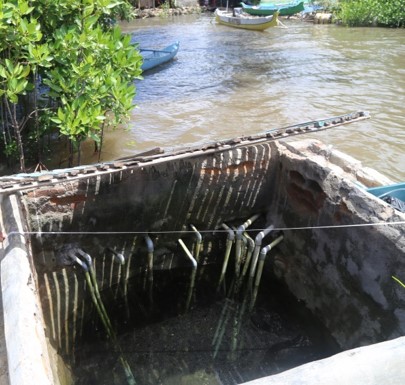Why Groundwater, Mangroves and Seagrasses?
Anthropogenic activities in coastal regions lead to elevated nitrate concentrations in groundwater. Submarine groundwater discharge (SGD) can transport these land-based nutrient inputs directly into coastal ecosystems, which can have severe effects such as eutrophication. SGD and associated nutrient fluxes are especially high around tropical islands.
These regions harbour sensitive coastal ecosystems (e.g. coral reefs, seagrass beds, mangrove forests). Severe effects of nitrate fluxes via SGD on coral reefs were already observed, while their effects on seagrass beds and mangrove forests are still poorly investigated.
We want to evaluate how elevated nitrate loadings from SGD will affect early life stages of seagrass and mangrove individuals. We believe that t This study is expected to provide extremely valuable information on the success for the establishment of new populations or for the recruitment of new individuals in already existing populations. Thus, appropriate measures can be taken to support the long-term viability of those valuable ecosystems in areas where SGD is prominent.
Experimental Design
In order to understand the effects of nutrient enriched submarine groundwater on the early life stages of seagrass and mangrove individuals, aquaria experiments will be carried out in the MAREE facilities at ZMT.
International Project Partner |
|---|
| Institute of Marine Sciences, University of Dar es Salaam (Zanzibar) |





